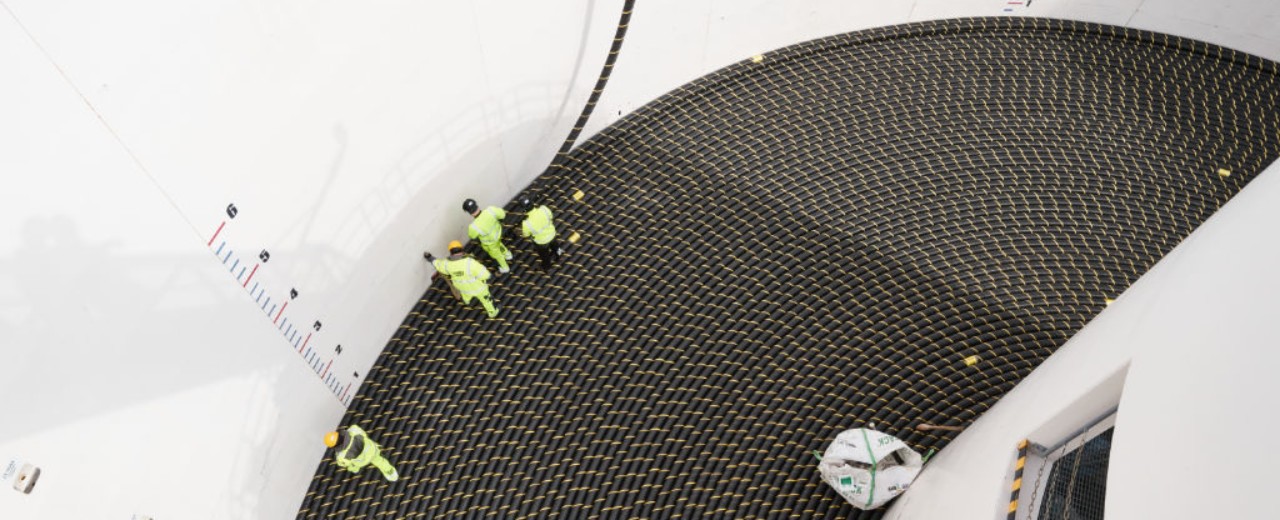News from 2025-02-06 / KfW Development Bank
Energy co-operation in the Mediterranean
A new undersea power cable is to connect Tunisia with Sicily

Italy and Tunisia are separated by 200 kilometres of Mediterranean Sea: on one side is the southern border of the EU, on the other is the northernmost tip of Africa. However, Tunisia and the EU will soon be moving closer together - at least in terms of energy. A submarine power cable is planned to run between the Tunisian peninsula of Cap Bon and Sicily.
The cable, co-financed by KfW on behalf of the German Federal Ministry for Economic Cooperation and Development (BMZ), will span a total of 220 kilometres, 20 of which will be on land, and form an important additional power link between the two continents. The project is called ELMED, which stands for ‘Electricity’ and ‘Mediterranean’. The Tunisian grid operator STEG and the Italian grid operator TERNA are jointly realising this major project.
ELMED is a strategically important project for both sides, as the connection marks a symbolic step towards stronger energy cooperation between Europe and North Africa. The project is part of the EU's Global Gateway connectivity initiative - a European alternative to China's infrastructure offerings along the New Silk Road. The transformative nature of the project is important: it will enable Tunisia to connect to the European electricity grid and minimise its dependency on the European power grid. Europe is gaining access to a potential source of future green electricity from North Africa, based on renewable energies.
Excellent prospects for solar energy
In fact, Tunisia has excellent prospects in terms of renewables, especially solar, but also wind energy. With around 3,000 hours of sunshine per year, roughly twice as many as in Germany, the country has a huge potential for solar energy that it has not even begun to utilise. Only around 5% of electricity production currently comes from renewable sources, with the majority being generated from gas.
In addition, Tunisia imports around 60% of its natural gas from neighbouring Algeria. This creates dependency and has placed an additional burden on the Tunisian budget since Algeria raised its previously low prices towards world market levels.
Against this backdrop, Tunisia wants to change course and utilise its renewable energy potential much more than before. By 2030, 35% of electricity is to come from renewable sources and the country has set itself the goal of being climate-neutral by the middle of the century.
Increased grid stability, more renewable energies
The ELMED submarine cable also plays a role in the realisation of these ambitious goals. In addition to significantly higher generation capacities, adjustments also need to be made to the electricity grid. The planned integration of the Tunisian electricity market into the European interconnected system will make it possible to purchase electricity from Europe. This will reduce Tunisia's dependence on Algeria and increase the share of renewables in the electricity mix, which already stands at 37% in Italy today and is set to rise to 70% by 2030.
At the same time, the high-voltage cable will also contribute to grid stability, an important prerequisite for the integration of more electricity from renewable sources in Tunisia. One thing is clear: the improved framework conditions for the electricity grid are likely to attract additional private investment. ELMED therefore creates several advantages for Tunisia, while the EU hopes that the electricity grid connection will lead to electricity imports based on renewable energies in the medium term.
Modernisation of the Tunisian electricity system
In addition to the submarine cable itself, there is also other associated infrastructure, such as two converter stations and a transformer station, which will contribute to the expansion and modernisation of the Tunisian electricity system. KfW is also planning to finance the modernisation of the Tunisian grid control room. It is intended to help make the electricity supply even more stable and efficient and is seen as an important building block for the planned increase in electricity generation from renewable energies.
The total costs for ELMED amount to around one billion euros. The EU Commission is providing the lion's share of this funding, a good EUR 307 million, as part of the Global Gateway Initiative. Under this initiative, the EU will spend EUR 300 billion worldwide on digital, energy and transport projects by 2027. The World Bank (WB), the European Investment Bank (EIB) and the European Bank for Reconstruction and Development (EBRD) are also participating in ELMED with favourable loans, as is KfW Development Bank on behalf of the BMZ.
When the cable goes into operation in 2029 and electricity flows between Europe and Africa, this will close an important gap between the two continents. Accordingly, Andrea Hauser, member of the Management Committee of KfW Development Bank, describes this direct electricity connection between Africa and Europe as ‘historic’ and ‘groundbreaking’.

Share page
To share the content of this page with your network, click on one of the icons below.
Note on data protection: When you share content, your personal data is transferred to the selected network.
Data protection
Alternatively, you can also copy the short link: https://www.kfw-entwicklungsbank.de/s/enzBWrMC.DMMA
Copy link Link copied